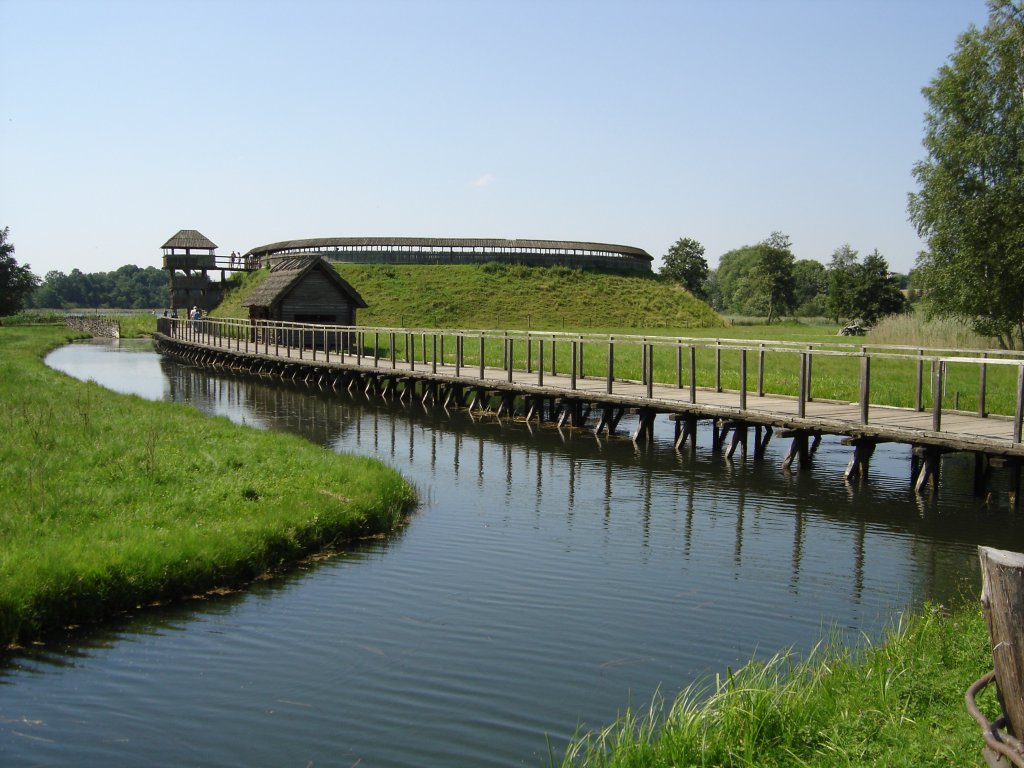|
Ranians
The Rani or Rujani (german: Ranen, ''Rujanen'') were a West Slavic tribe based on the island of Rugia (Rügen) and the southwestern mainland across the Strelasund in what is today northeastern Germany. The Rani tribe emerged after the Slavic settlement of the region in the ninth century,Ole Harck, Christian Lübke, Zwischen Reric und Bornhöved: Die Beziehungen zwischen den Dänen und ihren slawischen Nachbarn vom 9. Bis ins 13. Jahrhundert: Beiträge einer internationalen Konferenz, Leipzig, 4.-6. Dezember 1997, Franz Steiner Verlag, 2001, p.15, and ranked among the most powerful of several small Slav tribes between the Elbe and lower Vistula rivers before the thirteenth century. They were among the last tribes to hold to Slavic paganism, and the influence of their religious center at Arkona reached far beyond their tribal borders. In 1168, the Rani were defeated by King Valdemar I of Denmark, and his adviser Absalon, Bishop of Roskilde, resulting in the conversion of t ... [...More Info...] [...Related Items...] OR: [Wikipedia] [Google] [Baidu] |
Lutici
The Lutici or Liutizi (known by various spelling variants) were a federation of West Slavic Polabian tribes, who between the 10th and 12th centuries lived in what is now northeastern Germany. Four tribes made up the core of the federation: the Redarians (Redari, Redarii), Circipanians (Circipani), Kessinians (Kessini, Kycini, Chizzini) and Tollensians (Tholenzi). At least in part, the Lutici were a continuation of the Veleti. In contrast to the former and the neighboring peoples, the Lutici were not led by a Christian monarch or duke, rather power was asserted through consensus formed in central assemblies of the social elites, and the Lutici worshipped nature and several deities. The political and religious center was Radgosc (also referred to by several other names, e.g. Riedegost or Rethra). The Lutici were first recorded by written sources in the context of the uprising of 983, by which they annihilated the rule of the Holy Roman Empire in the Billung and Northern March ... [...More Info...] [...Related Items...] OR: [Wikipedia] [Google] [Baidu] |
Polytheism
Polytheism is the belief in multiple deities, which are usually assembled into a pantheon of gods and goddesses, along with their own religious sects and rituals. Polytheism is a type of theism. Within theism, it contrasts with monotheism, the belief in a singular God who is, in most cases, transcendent. In religions that accept polytheism, the different gods and goddesses may be representations of forces of nature or ancestral principles; they can be viewed either as autonomous or as aspects or emanations of a creator deity or transcendental absolute principle (monistic theologies), which manifests immanently in nature (panentheistic and pantheistic theologies). Polytheists do not always worship all the gods equally; they can be henotheists, specializing in the worship of one particular deity, or kathenotheists, worshiping different deities at different times. Polytheism was the typical form of religion before the development and spread of the Abrahamic religions of Ju ... [...More Info...] [...Related Items...] OR: [Wikipedia] [Google] [Baidu] |
Polabian Slavs
Polabian Slavs ( dsb, Połobske słowjany, pl, Słowianie połabscy, cz, Polabští slované) is a collective term applied to a number of Lechitic ( West Slavic) tribes who lived scattered along the Elbe river in what is today eastern Germany. The approximate territory stretched from the Baltic Sea in the north, the Saale and the ''Limes Saxoniae''Christiansen, 18 in the west, the Ore Mountains and the Western Sudetes in the south, and Poland in the east. They have also been known as Elbe Slavs (german: Elbslawen) or Wends. Their name derives from the Slavic ''po'', meaning "by/next to/along", and the Slavic name for the ''Elbe'' (''Labe'' in Czech and ''Łaba'' in Polish). The Polabian Slavs started settling in the territory of modern Germany in the 6th century. They were largely conquered by Saxons and Danes since the 9th century and were subsequently included and gradually assimilated within the Holy Roman Empire. The tribes were gradually Germanized and assimilated in ... [...More Info...] [...Related Items...] OR: [Wikipedia] [Google] [Baidu] |
Chernoglav
Chernoglav or Chernoglov (Old Icelandic: Tjarnaglófi) is the god of victory and war worshipped in Rügen, probably in the town of Jasmund, mentioned together with Svetovit, Rugievit, Turupid, Puruvit and Pizamar in the ''Knýtlinga saga''. Aleksander Gieysztor and Andrzej Szyjewski read the name as "Chernoglav/Chernoglov" (Polish: ''Czarnogłów''). Aleksander Brückner, on the other hand, thought that the only correct reading of the name was "Triglav". Jerzy Strzelczyk notes that the warlike character of a god may speak in favor of the "Triglav" reading, but the warlike character was a feature common to many of the Polabian and Pomeranian gods. Henryk Łowmiński decided that Chernogłów is "the cemetery transformation of the Chernobog", and Leszek Moszyński proposed a read "T'arnogłowy" (from Proto-Slavic ''*tьrnъ'', "thorn") meaning "with a head crowned with thorns", which is to refer to Jesus' crown of thorns and be a Christian influence on the late Polabian pagan ... [...More Info...] [...Related Items...] OR: [Wikipedia] [Google] [Baidu] |
Folk Religion
In religious studies and folkloristics, folk religion, popular religion, traditional religion or vernacular religion comprises various forms and expressions of religion that are distinct from the official doctrines and practices of organized religion. The precise definition of folk religion varies among scholars. Sometimes also termed popular belief, it consists of ethnic or regional religious customs under the umbrella of a religion, but outside official doctrine and practices. The term "folk religion" is generally held to encompass two related but separate subjects. The first is the religious dimension of folk culture, or the folk-cultural dimensions of religion. The second refers to the study of syncretisms between two cultures with different stages of formal expression, such as the melange of African folk beliefs and Roman Catholicism that led to the development of Vodun and Santería, and similar mixtures of formal religions with folk cultures. Chinese folk religion, f ... [...More Info...] [...Related Items...] OR: [Wikipedia] [Google] [Baidu] |
Jasmund
Jasmund is a peninsula of the island of Rügen in Mecklenburg-Vorpommern, Germany. It is connected to the Wittow peninsula and to the Muttland main section of Rügen by the narrow land bridges Schaabe and Schmale Heide, respectively. Sassnitz, Sagard and the Mukran international ferry terminal are on Jasmund. Jasmund is also famous for the Rügen Chalk cliffs within the Jasmund National Park The Jasmund National Park (German: ''Nationalpark Jasmund'') is a nature reserve on the Jasmund peninsula, in the northeast of Rügen island in Mecklenburg-Vorpommern, Germany. It is famous for containing the largest chalk cliffs in Germany, the ..., a nature reserve in the northeast of Rügen island. References Peninsulas of Mecklenburg-Western Pomerania Geography of Rügen {{VorpommernRügen-geo-stub ... [...More Info...] [...Related Items...] OR: [Wikipedia] [Google] [Baidu] |
Porewit
Porevit, Porovit or Borovit (, , , , , ) is a Slavonic god with unknown functions mentioned in only two sources: ''Gesta Danorum'' and in ''Knýtlinga saga''. The only historical information about this god is a description of a statue depicting him that had five faces and no weapons. Sources The first source to mention Porevit is the ''Gesta Danorum'' by Saxo Grammaticus. Saxo describes when, after Arkona was captured by the Danish king Valdemar I, its inhabitants made an agreement with him, which encourages the inhabitants of Charenza to make a similar agreement and surrender the city without a fight. Saxo describes that in this gord (stronghold) there were three temples dedicated to Rugiaevit, Porevit and Porenut. After the destruction of the temple and the idol of Rugiaevit by the Danes, Saxo writes: The same information is then given by the ''Knýtlinga saga'', which lists Porevit in the distorted form ''Puruvit''. Etymologies and interpretations From ''*pora'' "s ... [...More Info...] [...Related Items...] OR: [Wikipedia] [Google] [Baidu] |
Porenut
Porenut (, ) is a god with unknown functions mentioned in only two sources: ''Gesta Danorum'' and in ''Knýtlinga saga''. The only historical information about this god is the description of a statue depicting him with four faces on his head and a fifth face on his chest, which was held by his chin with his right hand and his forehead with his left hand. Sources The first source to mention Porenut is the ''Gesta Danorum'' by Saxo Grammaticus. Saxo describes when, after Arkona was captured by the Danish king Valdemar I, its inhabitants made an agreement with him, which encourages the inhabitants of Charenza to make a similar agreement and surrender the city without a fight. Saxo describes that in this gord (stronghold) there were three temples dedicated to Rugiaevit, Porevit and Porenut. After the destruction of the temple and the ideol of Rugiaevit by the Danes, Saxo writes: The same information is then given by the ''Knýtlinga saga'', which lists Porenut in the distorted f ... [...More Info...] [...Related Items...] OR: [Wikipedia] [Google] [Baidu] |
Rugievit
Rugiaevit, Rugievit () or Ruyevit is a god of the Slavic Rani worshipped on Rügen, mentioned in only two sources: '' Gesta Danorum'' and in '' Knýtlinga saga''. His temple, along with those of Porevit and Porenut, was located in the gord of Charenza, probably today's Garz. The statue of him had seven faces, seven swords at his belt and an eighth one in his hand. Under his lips was a nest of swallows. Mostly associated with the sphere of war, but also sexual. "Private", from the point of view of rulers, cult of Rugiaevit competed with the "public" and theocratic cult of Svetovit of Arkona. Sources The first source to mention Rugiaevit is the '' Gesta Danorum'' by Saxo Grammaticus. Saxo describes when, after Arkona was captured by the Danish king Valdemar I, its inhabitants made an agreement with him, which encourages the inhabitants of Charenza to make a similar agreement and surrender the city without a fight. Saxo describes how the stronghold had three temples ded ... [...More Info...] [...Related Items...] OR: [Wikipedia] [Google] [Baidu] |
Svetovit
Svetovit, Sventovit, Svantovit is the god of abundance and war, and the chief god of the Slavic tribe of the Rani, and later of all the Polabian Slavs. His organized cult was located on the island of Rügen, at Cape Arkona, where his main temple was also located. According to the descriptions of medieval chroniclers, the statue representing this god had four heads, a horn and a sword, and to the deity himself were dedicated a white horse, a saddle, a bit, a flag, and eagles. Once a year, after the harvest, a large festival was held in his honor. With the help of a horn and a horse belonging to the god, the priests carried out divinations, and at night the god himself rode a horse to fight his enemies. His name can be translated as "Strong Lord" or "Holy Lord". In the past it was often mistakenly believed that the cult of Svetovit originated from St. Vitus. Among scholars of Slavic mythology, Svetovit is often regarded as a Polabian hypostasis of Pan-Slavic god Perun. His cult co ... [...More Info...] [...Related Items...] OR: [Wikipedia] [Google] [Baidu] |
Principality
A principality (or sometimes princedom) can either be a monarchical feudatory or a sovereign state, ruled or reigned over by a regnant-monarch with the title of prince and/or princess, or by a monarch with another title considered to fall under the generic meaning of the term ''prince''. Terminology Most of these states have historically been a polity, but in some occasions were rather territories in respect of which a princely title is held. The prince's estate and wealth may be located mainly or wholly outside the geographical confines of the principality. Generally recognised surviving sovereign principalities are Liechtenstein, Monaco, and the co-principality of Andorra. Extant royal primogenitures styled as principalities include Asturias (Spain). The Principality of Wales existed in the northern and western areas of Wales between the 13th and 16th centuries; the Laws in Wales Act of 1536 which legally incorporated Wales within England removed the distinction between th ... [...More Info...] [...Related Items...] OR: [Wikipedia] [Google] [Baidu] |



.png)
.png)

